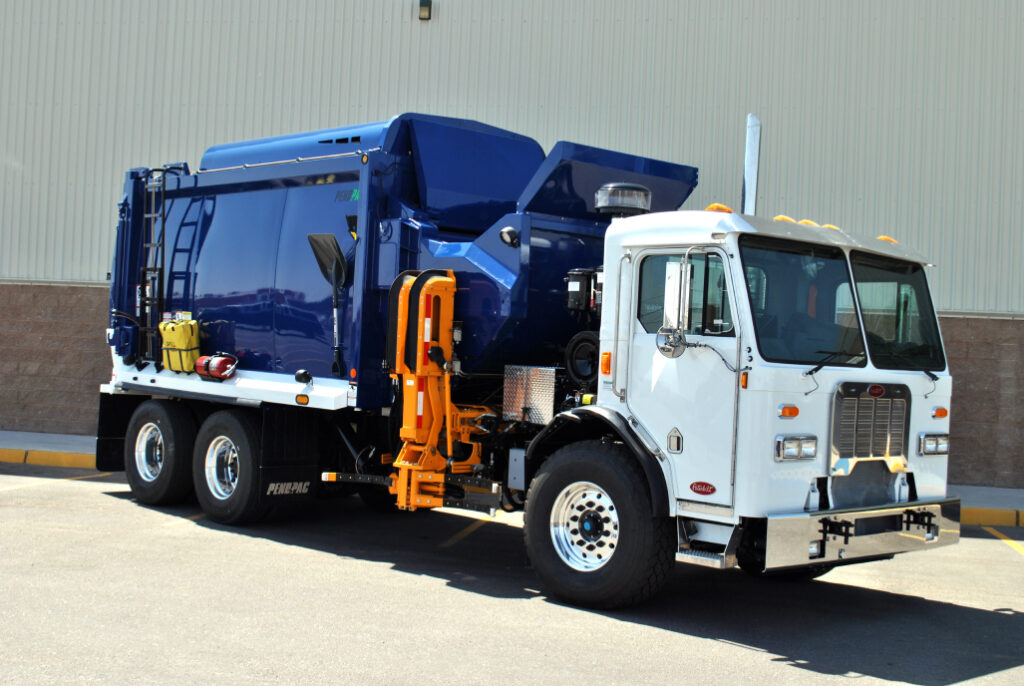For waste management and materials handling, side loader trucks have proven to be indispensable workhorses. These versatile vehicles are commonly used for curbside waste collection, transportation of bulky items, and the efficient loading and unloading of cargo containers.
When looking for used side loaders for sale, one of the most common questions asked by operators and businesses alike is, “How much can a side loader lift?” In this article, we’ll explore the factors that influence a side loader’s lifting capacity and the typical weight limitations you can expect.
Understanding the Capacity and Capabilities of Side Loader Trucks
Side loader trucks, also known as side loaders or lateral loaders, are widely used in various industries, including waste management, logistics, and shipping. Equipped with a hydraulic lifting mechanism installed on the side of the vehicle, side loader trucks can pick up and deposit objects from its side without additional equipment or machinery.
The chassis size plays a significant role in influencing the lifting capacity of a side loader. Simply put, a bigger chassis can lift more weight. The chassis refers to the frame or structural framework of the truck that supports the entire vehicle, including its load-carrying components, hydraulic system, and other equipment.
Before requesting a side loader truck quote, let’s learn how the chassis size impacts the lifting capacity of a side loader:
1. Structural Integrity
A larger and stronger chassis provides better structural integrity and stability to the side loader. When lifting heavy loads, the chassis must withstand the forces exerted by the hydraulic system and the weight of the lifted objects. A robust chassis ensures the truck remains stable and secure during lifting operations.
2. Weight Distribution
The chassis size affects weight distribution throughout the truck. Proper weight distribution is crucial for maintaining balance and stability while lifting heavy loads. A larger chassis allows for a more even distribution of the load, reducing the stress on specific components and preventing the overloading of particular areas.
3. Support for Hydraulic System
The hydraulic system of a side loader is responsible for lifting and lowering the loads. A larger chassis can accommodate a more powerful hydraulic system with larger cylinders and pumps, which enhances the lifting capacity. In other words, the increased hydraulic power allows the truck to effectively handle heavier loads.
4. Payload Space
The payload space of a side loader is the area on the truck’s lifting mechanism or loading platform where cargo or waste containers are placed for transportation. A larger chassis typically offers increased space for the payload, allowing for more, larger, or heavier containers and materials to be lifted.
Safety Considerations to Prevent Overloading
While side loader trucks are designed to handle substantial weights, operators must adhere to safety guidelines to prevent accidents and ensure smooth operations. Overloading a side loader can lead to equipment damage, safety hazards, and potential injuries to staff.
It’s important to remember the lifting capacity of a side loader truck depends on various factors, including vehicle size, hydraulic system, materials, and counterweight distribution. Understanding the capabilities of your side loader is vital for safe and efficient waste management and materials handling operations.
Always consult the manufacturer’s guidelines and adhere to safety protocols to make the most of your side loader’s lifting potential. Additionally, you can contact Route Ready Trucks to learn the specific lifting capacities of the different side loaders to avoid exceeding their limits.

